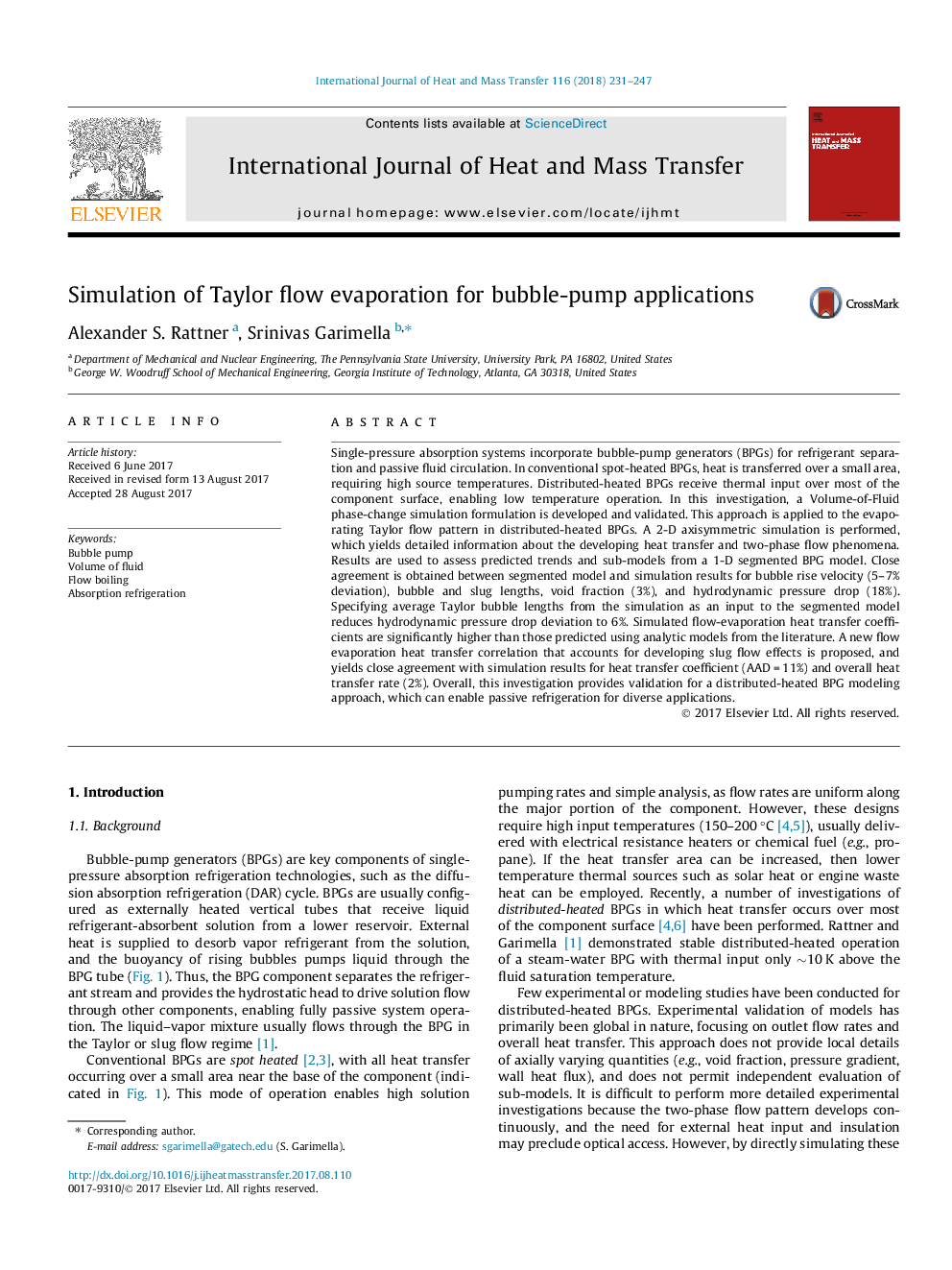| Article ID | Journal | Published Year | Pages | File Type |
|---|---|---|---|---|
| 4993757 | International Journal of Heat and Mass Transfer | 2018 | 17 Pages |
Abstract
Single-pressure absorption systems incorporate bubble-pump generators (BPGs) for refrigerant separation and passive fluid circulation. In conventional spot-heated BPGs, heat is transferred over a small area, requiring high source temperatures. Distributed-heated BPGs receive thermal input over most of the component surface, enabling low temperature operation. In this investigation, a Volume-of-Fluid phase-change simulation formulation is developed and validated. This approach is applied to the evaporating Taylor flow pattern in distributed-heated BPGs. A 2-D axisymmetric simulation is performed, which yields detailed information about the developing heat transfer and two-phase flow phenomena. Results are used to assess predicted trends and sub-models from a 1-D segmented BPG model. Close agreement is obtained between segmented model and simulation results for bubble rise velocity (5-7% deviation), bubble and slug lengths, void fraction (3%), and hydrodynamic pressure drop (18%). Specifying average Taylor bubble lengths from the simulation as an input to the segmented model reduces hydrodynamic pressure drop deviation to 6%. Simulated flow-evaporation heat transfer coefficients are significantly higher than those predicted using analytic models from the literature. A new flow evaporation heat transfer correlation that accounts for developing slug flow effects is proposed, and yields close agreement with simulation results for heat transfer coefficient (AADÂ =Â 11%) and overall heat transfer rate (2%). Overall, this investigation provides validation for a distributed-heated BPG modeling approach, which can enable passive refrigeration for diverse applications.
Related Topics
Physical Sciences and Engineering
Chemical Engineering
Fluid Flow and Transfer Processes
Authors
Alexander S. Rattner, Srinivas Garimella,
